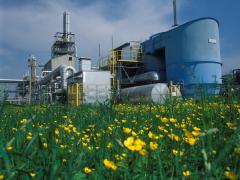Agricultural non-CO2 emission reduction potential in the context of the 1.5 °C target
Agricultural methane and nitrous oxide emissions represent around 10–12% of total anthropogenic GHG emissions and have a key role to play in achieving a 1.5 °C (above pre-industrial) climate stabilization target. Using a multi-model assessment approach, we quantify the potential contribution of agriculture to the 1.5 °C target and decompose the mitigation potential by emission source, region and mitigation mechanism.
The results show that the livestock sector will be vital to achieve emission reductions consistent with the 1.5 °C target mainly through emission-reducing technologies or structural changes. Agriculture may contribute emission reductions of 0.8–1.4 Gt of CO2-equivalent (CO2e) yr−1 at just US$20 per tCO2e in 2050. Combined with dietary changes, emission reductions can be increased to 1.7–1.8 GtCO2e yr−1.
At carbon prices compatible with the 1.5 °C target, agriculture could even provide average emission savings of 3.9 GtCO2e yr−1 in 2050, which represents around 8% of current GHG emissions.
This article is available on the publisher’s website via restricted access.
Authors
Specifications
- Publication title
- Agricultural non-CO2 emission reduction potential in the context of the 1.5 °C target
- Publication date
- 17 December 2018
- Publication type
- Publication
- Magazine
- Nature Climate Change
- Product number
- 3615




